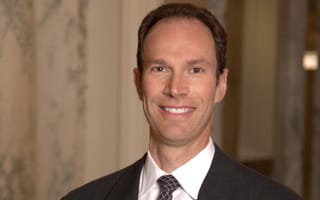


Two recent articles, in the Idaho State Journal and an Idaho Statesman editorial, claim expanding Medicaid will aid our economy. A full review of the details behind these numbers demonstrate this is wishful thinking.
Both articles make similar claims, and it’s important to understand the genesis of these numbers, the assumptions behind the numbers and the impact to other states that have already expanded Medicaid.
Health and Welfare Director Richard Armstrong presented Medicaid expansion as “Healthy Idaho” during the 2015 legislative session. The presentation detailed $173 million in savings to Idaho as a result of expanding Medicaid. The savings were estimated by the actual firm Milliman. The report, dated November 2014, used a 10-year horizon, which was necessary given the federal matching rate drops to 90 percent in 2020, from 95 percent in 2017.
Well, guess what? In January 2016, Milliman updated its report, and the 10-year projection swung to a net cost of ($186 million) to the state. The Milliman update was largely ignored by the press, and even Director Armstrong’s July 20 presentation to the legislative Health Care working group used the older figures (his department has since updated that slide in his presentation).
During the Aug. 11 Health Care Working Group meeting, a new set of numbers were presented on the fiscal impact of expanding Medicaid. These estimates, “Understanding the Coverage Gap in Idaho,” were presented by Lauren Nechochea. The analysis details a net $165.5 million in savings to Idaho over the next five years.
How so?
Well, the costs and savings from the Milliman report are used, for a five-year horizon, from State Fiscal Year 2018 (SFY) to SFY 2022. But added to those numbers is the estimated impact from the federal funds that flow to Idaho as part of the federal Medicaid match (FMAP). So there were two changes to the methodology — a shortening of the time horizon and the inclusion of an economic multiplier from the federal funds.
It’s important to note this match would have been 100 percent in 2016 and would fall to 90 percent in 2020 and beyond. So by using a shorter time horizon, the analysis avoids using more years when the fiscal match is at 90 percent. The use of an economic multiplier is common in economic models, but was it used appropriately here?
The articles in both the Idaho State Journal and the Idaho Statesman lean heavily on the multiplier effect of the federal funds. In fact, the Idaho Statesman editorial chides the Legislature for its reluctance to take more federal dollars.
There are a number of points to keep in mind. The first is that federal money brings with it a set of obligations and, with respect to Medicaid expansion, the state would be making a huge bet; a bet that a federal government with more than $19 trillion in debt could indefinitely fund expanded Medicaid at a 90 percent federal match rate (FMAP). The FMAP for the core Medicaid programs on which thousands of children depend is about 70 percent in federal dollars.
The second point is dependence on federal aid is not a recipe for wealth generation; rather, it’s a symptom of poverty. Federal money flows into the poorer states at higher rates, but does it really lift them? Mississippi and Louisiana are the two states (based on Tax Foundation FY 2013 data) with federal aid at more than 40 percent of total state funds. Mississippi is consistently the state with the lowest per capita income.
The final point is that we have increasing evidence from other states that Medicaid expansion is not the fiscal panacea its proponents claim. Bear in mind that when Medicaid expansion occurred in many states, the federal government initially picked up 100 percent of the tab. So data from the lower federal match rate is only very recent.
Dr. Deane Waldman, who recently relocated from New Mexico to Texas, notes New Mexico could not resist the federal dollars. Writing for the Dallas Morning News, he wrote:
The New Mexico Legislative Finance Committee had also projected that enrollment in their state Medicaid program could increase by as much as 212,000 people by 2020. In fact, within two years, more than 300,000 were added to the rolls, making 41 percent of the entire state population of New Mexico eligible for "free" Medicaid insurance.
New Mexico is now facing a Medicaid budget shortfall of $416 million for 2017, despite the influx of federal dollars. With no alternative, the state had to cut the already low Medicaid reimbursement schedule for doctors even further. Thus, there will be fewer providers to care for an even greater number of Medicaid patients. As Robert Moffett of Heritage Foundation warned Congress in 2009, "You can't get more of something by paying less for it."
The Mercatus Center at George Mason University recently published a comprehensive ranking of all 50 states by fiscal condition. Of the top 10 most fiscally solvent states, only three — Alaska, North Dakota and Montana — have expanded Medicaid. Of the 10 most fiscally distressed states, only one — Maine — rejected Medicaid expansion.
When we step back and look at the bigger picture, the trend still holds. Of the top 25 most fiscally solvent states, 40 percent have expanded Medicaid. Of the 25 least fiscally solvent states, 84 percent have expanded Medicaid.
Are we making the claim that expanding Medicaid leads to fiscal insolvency?
Of course not. But it should serve as a cautionary tale for Idaho and the other 18 states that have thus far refused to expand Medicaid. Federal money comes with policy strings attached, and often they can’t be undone simply because a state wishes it so. Increasing dependency isn’t a long-term path to prosperity and state fiscal solvency. More likely, it signals a retreat from sound fiscal policy, and expanding Medicaid is simply one step in the wrong direction.

